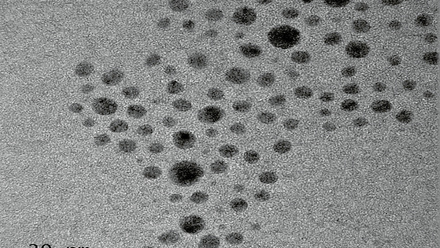Patterns of quantum interference discovered from molecular collisions
Quantum interference and symmetry dictate molecular behaviour in gold-surface collisions.

After tuning methane molecules to specific quantum states, a scientific group at EPFL, Switzerland, scattered them off a gold surface and measured their states after collision.
The results are reported to show clear patterns of quantum interference, challenging assumptions about molecular behaviour and providing a novel way to study these interactions.
Observing quantum interference when heavier molecules, like methane, collide with surfaces has previously been nearly impossible, say the researchers, who worked with colleagues at the Max Planck Institute for Multidisciplinary Sciences, Germany, and the University of New Mexico, USA.
This is due to the overwhelming number of different collision outcomes.
Moreover, some wondered if all quantum effects would 'wash out' for these processes, so that simpler laws of classical physics that apply to everyday 'macroscopic' objects might be enough to describe them.
The team grew a gold sample to be perfectly crystalline, which they specifically cut to reveal an 'AU(111)' surface, which is atomically smooth and chemically inert. They kept the sample under ultra-high vacuum during experiments to prevent contamination from gas particles.
The exceptional flatness and cleanliness of the Au(111) surface ensured that the observed scattering behaviour arose from fundamental quantum wave aspects, rather than random surface irregularities or impurities, allowing the team to focus purely on interference effects.
The researchers used a laser technique to precisely control the quantum states of methane molecules before they collided with the gold surface, and measured the quantum states the molecules occupy after the collision.
As methane molecules naurally have a mix of different energy states, their internal vibrations and rotations vary.
To ensure the same well-defined quantum state for all the molecules, the researchers first fired a pump laser at a beam of methane molecules, exciting them into a well-defined quantum state.
They aimed the beam at the gold surface, where they collided and scattered. Afterwards, the team hit the scattered molecules with a tagging laser tuned to specify energy levels.
If a molecule was in a matching quantum state, it absorbed the laser's energy, creating a tiny change in temperature of the scattering molecules that the researchers can measure with a highly sensitive detector called a bolometer.
The scientists found that symmetry dictated the transitions.
If two states of a methane molecule had incompatible symmetry, then the different pathways taken between these two states cancelled each other out. In this case the transition simply did not happen.
But when the states had compatible symmetry, the pathways amplified one another and the transitions were strong and clearly visible, allowing smooth movement.
The group says this confirms that quantum interference is not just abstract but actively controls molecular behaviour at surfaces.







